But I really wanted to see some whales (and if I was lucky, even some dolphins) and the thought of seeing a blue whale was so tantalizing that I was willing to wake up at 8am on a Saturday to do it.
The outfit I chose to get me to the blues was the Blue Whale and Sea Life Cruise at the Long Beach Aquarium. Leaving every day at 11:30 and 3:00, the cruise is 3.5 hours long and gives you views of the harbor, the Queen Mary, and more oil derricks than you can possibly imagine.
The boat is comfy enough - we were sailing on the Christopher. There are bench style seats in the back of the boat and padded seats in the front.
There's a counter for snacks - popcorn, candy, and even beer. lol
You're free to walk around the boat at all times and stand near the railings if you prefer.
In my opinion the best seats are where I was sitting - up at the top of the padded seats in the front, preferably on the side. Like see this woman with the major hardware whose hobby is photographing whales and birds? You want to sit where she is.
Camera lens envy. :( lol
Shots of leaving the harbor. When we started at 11:30am, there was a light marine layer and the skies were gray, but it quickly burned off and we had blue skies for most of the trip. The sea was smooth and calm.
Beautiful island for vacations?
Nope - it's one of the THUMS oil islands disguised to blend in to the surroundings. These are manmade islands that were once owned by several oil companies, but are now under the umbrella of Oxy. They tap into the massive Wilmington Oil Field below most of Ocean Boulevard, downtown Long Beach and the port.
[blog detour: I've become rather interested in the history of and contemporary oil production in the Los Angeles area. I mean, I grew up next to an oil field and currently live blocks away from an oil derrick. I find the coexistence of these things with LA's urbanity so interesting and somewhat sobering. After some research, I'd love to do a blog post on this. Anyway, back to whales!]
The blue whale is the largest mammal and possibly the largest animal period to ever inhabit the earth. How big you ask? Time for some blue whale fun facts!
- Blue whales can grow up to 100 feet (~30 m). Lengthwise that's the equivalent of two city buses and longer than an NBA basketball court.
- They can weigh up to 200 tons. That's about 8 DC-9 aircrafts or 15 school buses.
- In fact, their tongue alone weigh as much as an elephant. About 100 people can fit in a blue whale's mouth.
- A blue whale heart is the size of a Mini Cooper and can weigh close to 2,000 pounds (~907 kg). Its heartbeat can be detected from two miles away and a human can easily crawl through its major arteries.
- Blue whales can produce sounds louder than a jet engine (188 dB vs. jet engine's 140 dB) and can communicate with other whales up to 1,000 miles away.
- A single adult eats about 4 tons of krill (tiny shrimplike animals) a day.
- The spray from a blue whale's blowhole is almost as tall as a three-story building (30 feet or 9 m). A toddler can fit into its blowhole.
Wait, is there something on the horizon?
Thar she blows! It's the Balaenoptera musculus!
The blue whale is blue-gray in color, but often with lighter gray mottling on a darker background. So beautiful.
Its dorsal (top) fin is small and triangular or falcate (curved) in shape, and is located three-fourths of the way back on the body.
As baleen whales, blue whales eat krill, little shrimp like creatures, by straining them through series of 260-400 fringed overlapping plates hanging from each side of the upper jaw.

We got to see a piece of the baleen (along with a sea lion skull).
In the summer, the blue whales are eating 4 tons of this stuff or more each day. This means it may eat up to 40 million krill. The krill are pink, so guess what color the blue whale poo is?
Yep.
Maybe if you eat this, you'll have pink poo too.

They are fast, strong swimmers, capable of reaching 30 mph (48.3 km/hr) when alarmed, but they usually cruise along at about 12 mph (19.3 km/hr).
The flukes are broad and triangular. The rear edge is smooth with a slight median notch.
Blue whales often travel in pairs and we spent most of the time following a pair (perhaps a mother and offspring).
Look at that spout!
They would do deep dives and raise their impressive flukes and then rest for a bit by swimming just under the surface and coming up for frequent breaths.
Because of their enormous size and speed, blue whales were safe from early whalers, who could not pursue them in open boats with hand harpoons. But in 1868 a Norwegian, Sven Foyn, revolutionized the whaling industry with the invention of the exploding harpoon gun and by using steam and diesel powered factory ships and catcher boats. He also perfected the technique of inflating dead whales with air so they wouldn't sink after being harpooned. The whaling industry began to focus on blue whales after 1900. A single 90-foot blue whale could yield up to 120 barrels of oil, and the blues were killed by the thousands.
When blue whales surface, the ocean changes color slightly - it goes from a deep blue to sort of a greenish color just before they surface. Good for us whale watchers, but bad for the blues when they were being hunted. All hunters had to do was aim and the telltale spot and fire.
The slaughter peaked in 1931 when over 29,000 were killed in one season. After that blue whales became so scarce that the whalers turned to other species and, belatedly, the International Whaling Commission (IWC) banned all hunting of blue whales in 1966 and gave them worldwide protection. Recovery has been extremely slow, and only in the last few years have there been signs that their numbers may be increasing. Pre-whaling population estimates were over 350,000 blue whales, but up to 99% of blue whales were killed during whaling efforts. Presently, there are an estimated 5-10,000 blue whales in the Southern Hemisphere, and only around 3-4,000 in the Northern Hemisphere.
That's kind of a downer, I know... but it definitely made me more conscious about the things that I personally can do to make the ocean a better place for marine life. Chantal our guide mentioned the pacific garbage patch and how bits of ground up plastic are now replacing seashells on our beaches. I'm definitely more committed to decreasing waste now.
In addition to blue whales, we also saw some fin whales. The fin whale is the second largest whale and is characterized by a prominent dorsal fin.
It's one of the fastest whales and is capable of bursts of speed of up to 23 mph (37 km/hr) leading to its description as the "greyhound of the sea." Once blue whales were off limits, people began hunting these as replacements, so now they're on the endangered species list too and are just a fraction of their original numbers.
We stopped following the whales and headed to the rigs in deeper water to see some Californian Sea Lions.
They like to hang out on this buoy.
I felt bad though, because they got annoyed by our presence and jumped off into the water. Our guide Chantal said they they jump on the buoy and it must be a real pain in the ass to get on that thing.
I got even more unnerved when I saw what we were heading to.
Call me naive or uninformed, but I didn't even know these things were even out here. In light of recent events, I'm praying that they take every possible safety precaution they can.
At any rate, they seem like a cheery bunch.
And like some people have mentioned, these oil rigs can be a safe haven for fish and other marine life. Until something goes horribly wrong, I guess.
Sure enough, the sea lions appeared to be having a fine old time on the platforms.
Uh oh - SHARK!
Just kidding! As we were heading back, we ran into a school of bottlenose dolphins in the harbor. They swam alongside the boat, to the delight of many. They are quick and a bitch to capture with a camera.
We also saw some common dolphins. These weren't as big and were even a bigger bitch to capture with a camera.
I don't know what would be worse - to have a name that insults your physical appearance or one that insults your self esteem. Poor dolphins. But at least they're not on the endangered species list...
Looking through my pictures, I realized that I should have taken some video, as the static image doesn't quite give you the same sense of awe at being in the presence of one of the most magnificent creatures on this earth. I found some on youtube though.
If you live anywhere within a couple hours of Long Beach and you don't get seasick, you really should take a few hours and do this. Time is of the essence! Peak blue whale times are July and August. Mr. Insom was out of town, so he couldn't go with me and I liked it so much I'm thinking of going again so I can take him as well.




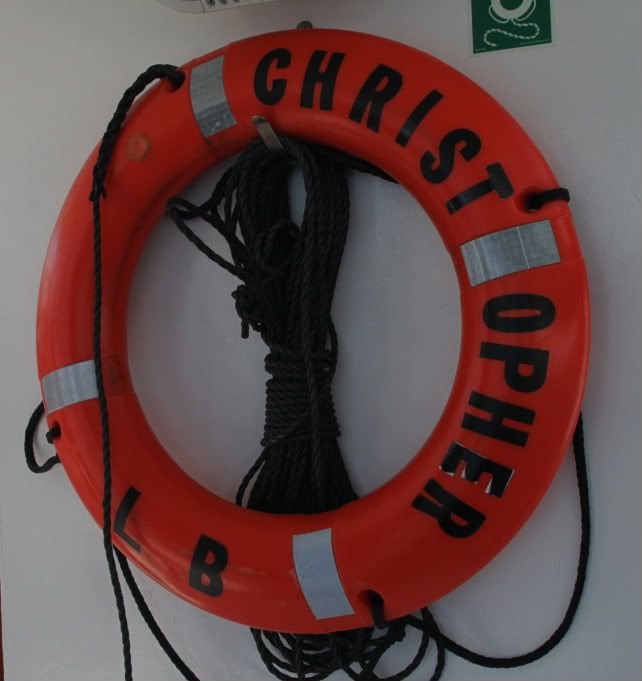





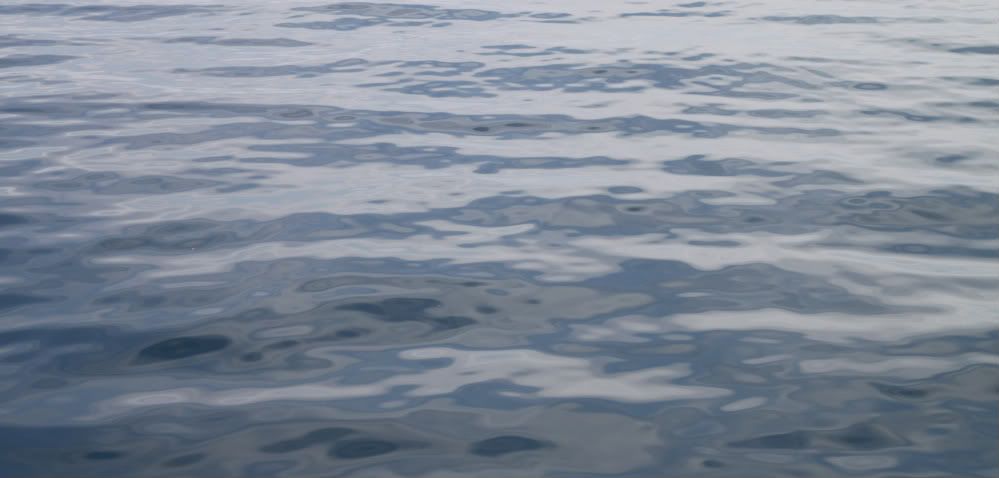

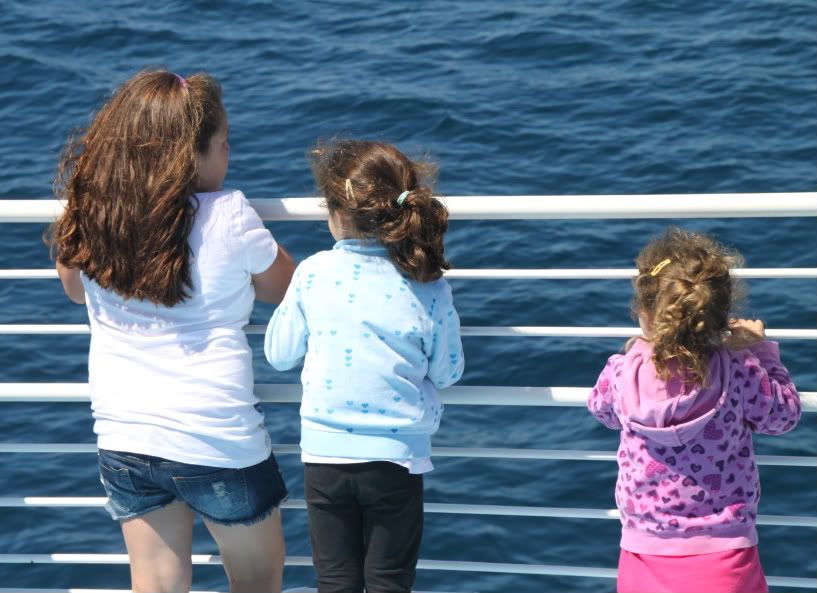


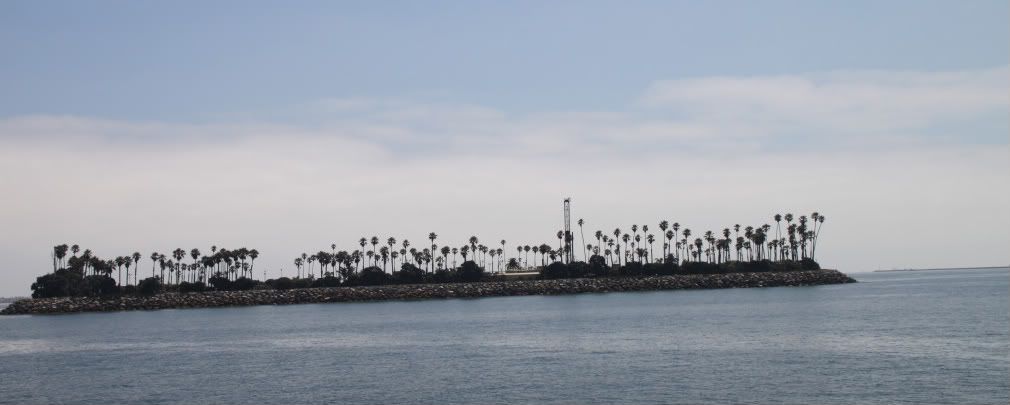

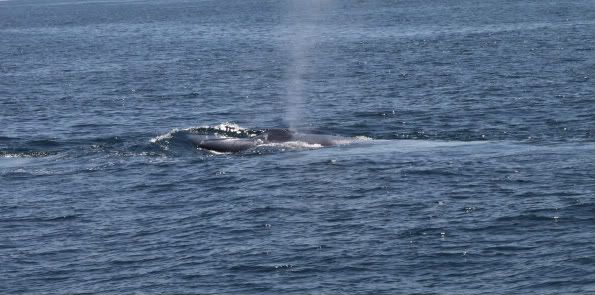



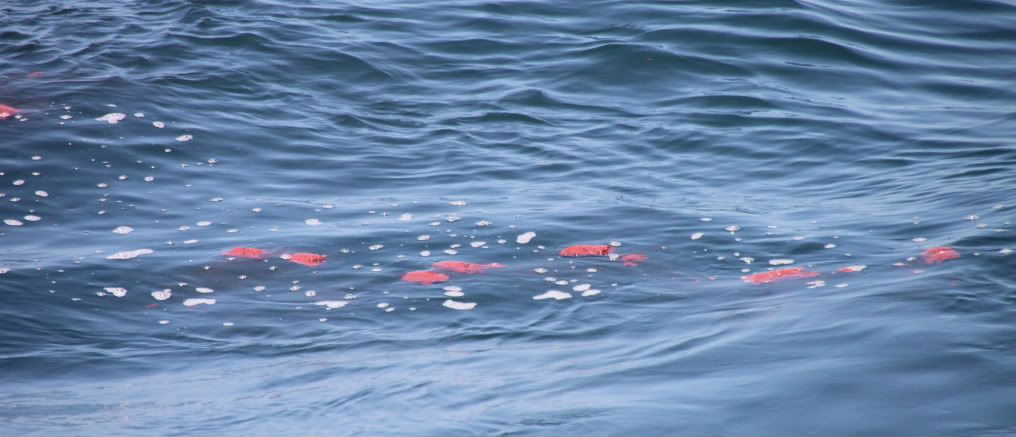
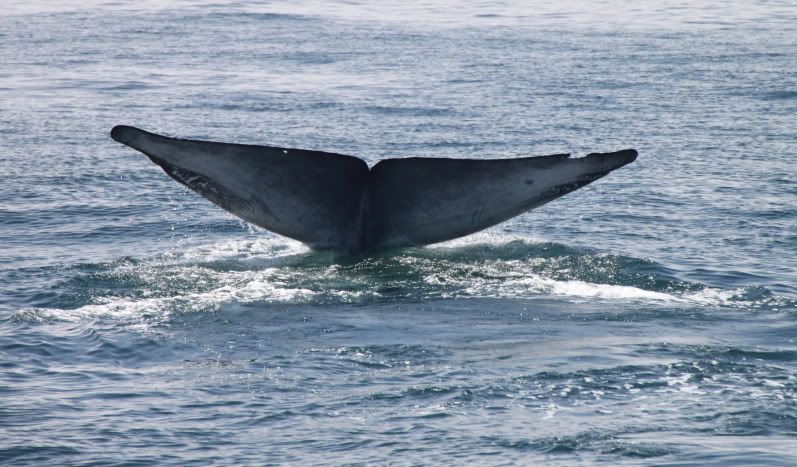

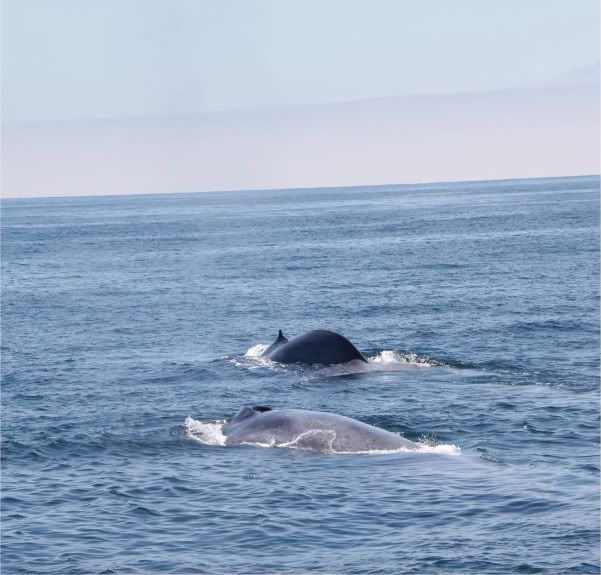

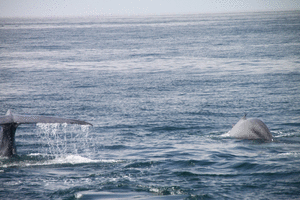

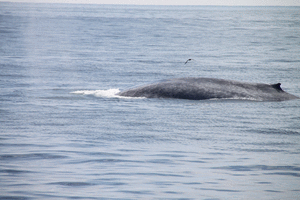


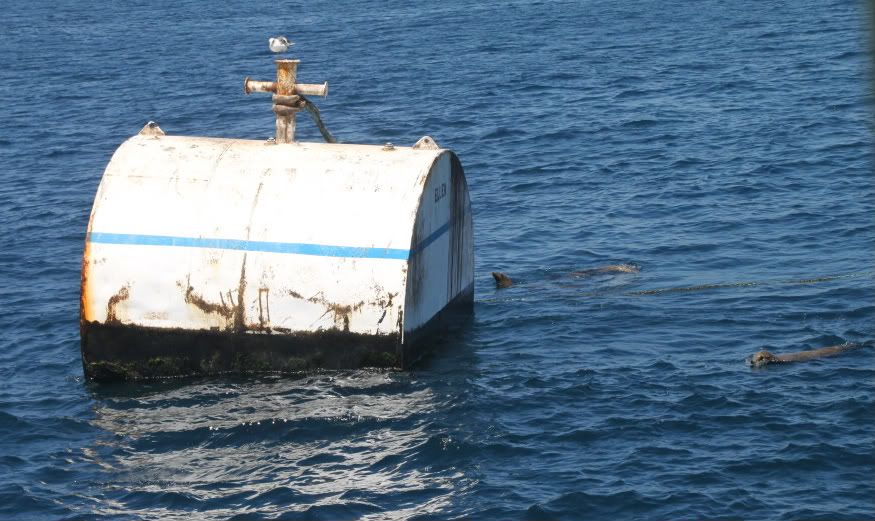













7 comments:
This is a great review of the trip! There used to be a group that came to our elementary school to speak to us about marine mammals, specifically whales and dolphins. They'd bring baleen and skeletons and other fun props and would teach us about conservation and other eco-friendly stuff. I've been enamored with marine mammals ever since. I wonder if they still do that.... Hmmm.
So awesome!
Next time you have envy, you should totally compliment the owner and ask if you could try it. This worked for me in Costa Rica. He was so happy to share! The guy even let me use his tripod, too!
People love when you notice their lenses. :)
I'm on a boat!
Your stats on the whales and how big they are kind of scare me.
I'M ON A BOAT!
lol
Loved the informative post. Especially the pink whale poo. Very interesting.
another good one. fun facts, poo talk, animated gif, and talk of oil derricks (i happen to be researching both oil rigs and the pacific garbage patch right now, although not for "fun.")
last time i went whale-watching was for a field trip in 3rd grade. everyone in the class got seasick except me and 2 others. we didn't see much, though.
Yay great post. I feel so bad for oceanlife. Humans have really fucked them over hard.
Post a Comment